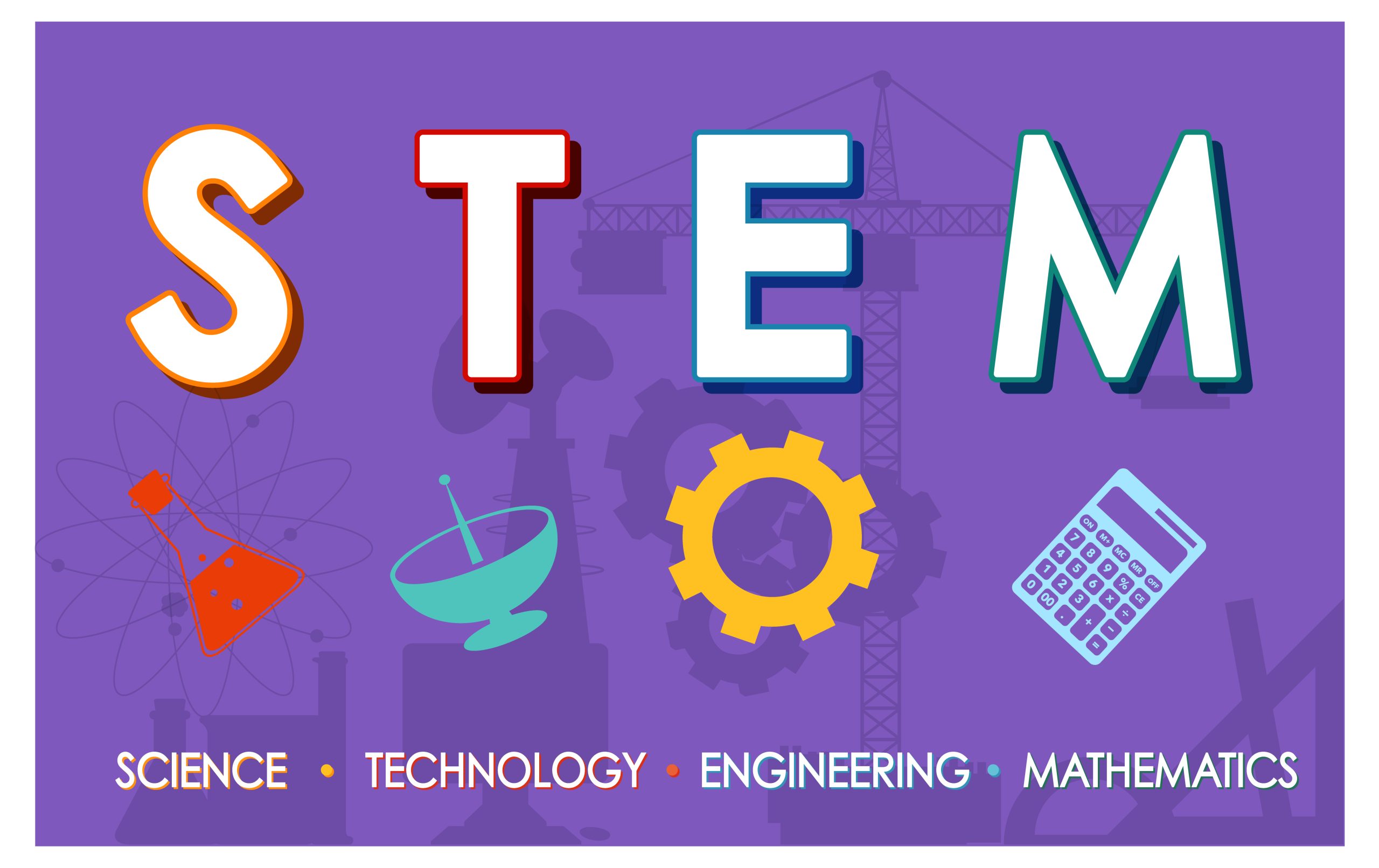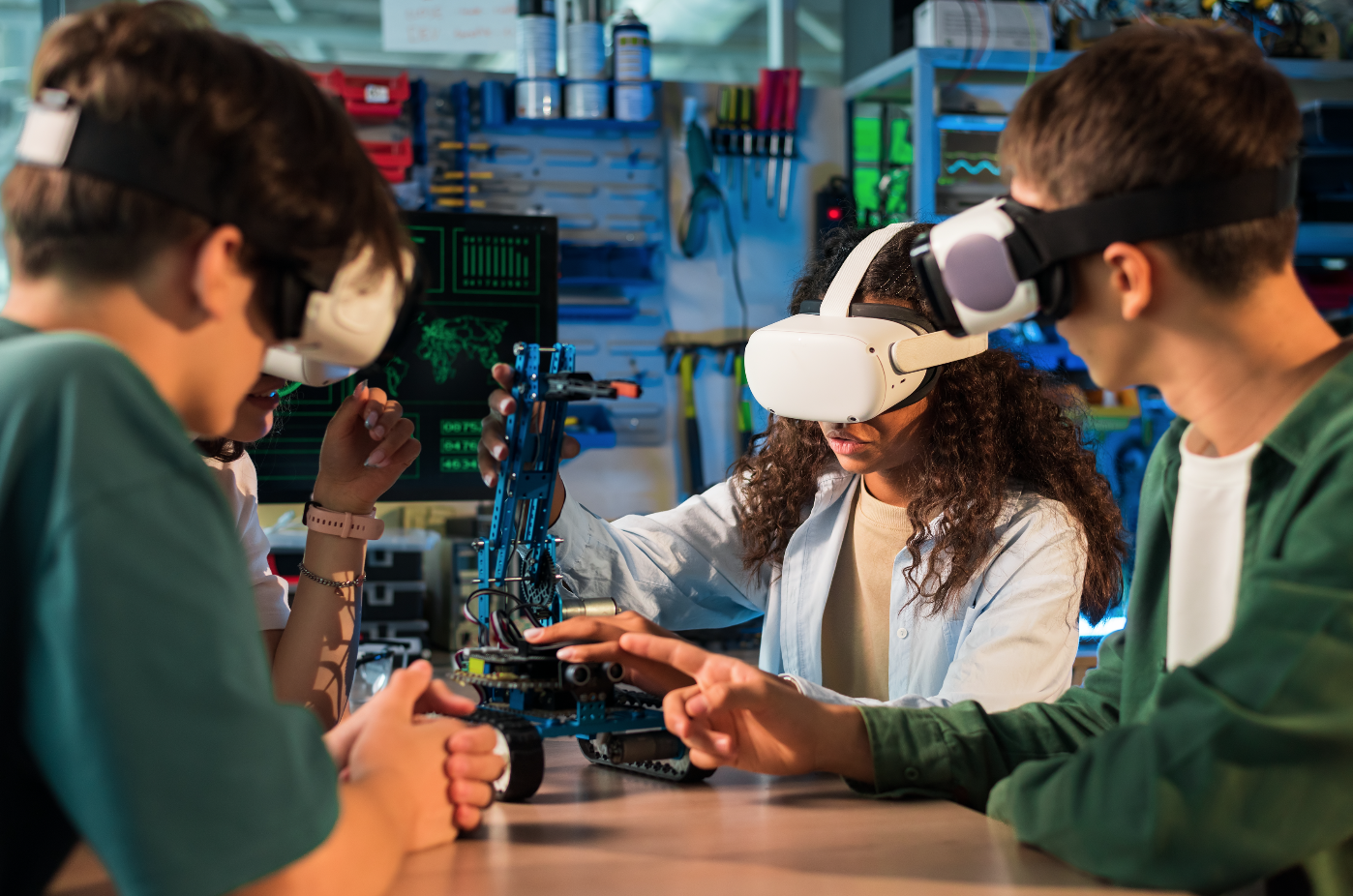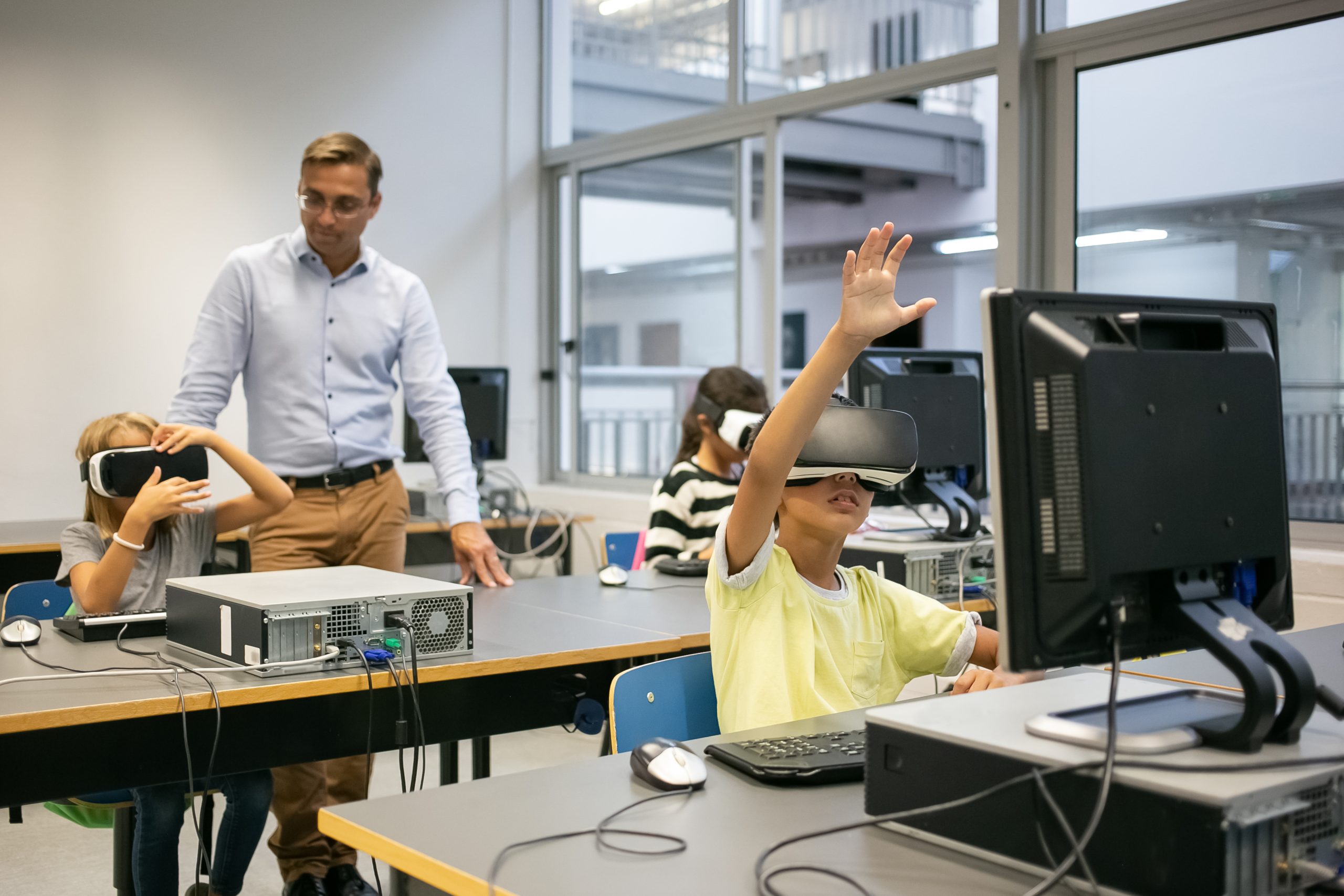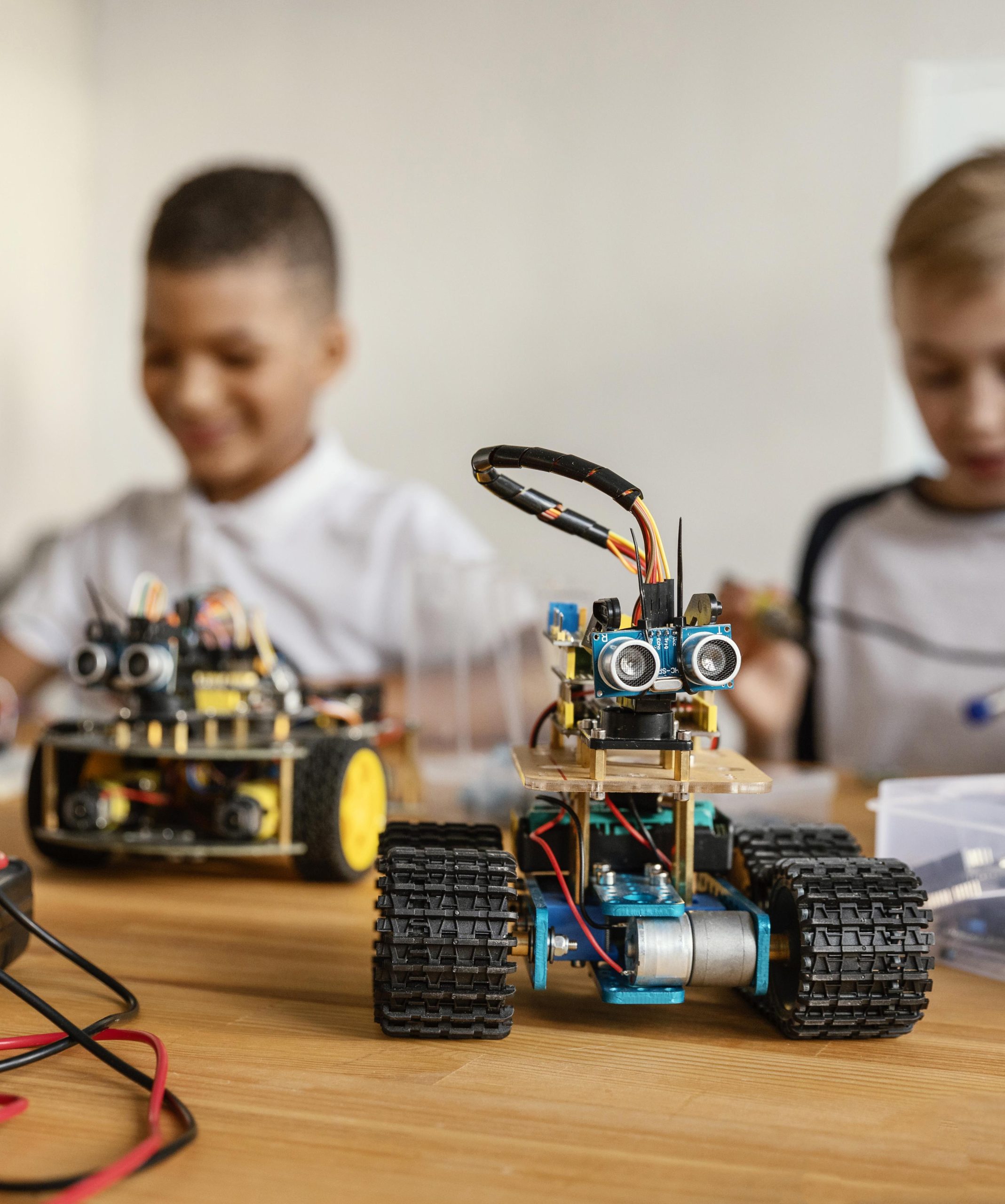Last Updated on May 4, 2025 by Muhamed Elmesery
In today’s world, STEM education is not just an option but a necessity. Its role in preparing students for the opportunities and challenges of the 21st century cannot be overstated. By fostering critical thinking and problem-solving skills, STEM education equips students with the tools they need to succeed in a rapidly evolving global landscape.
In this blog, we will dive into the world of STEM education to understand its significant roles, the difference between STEM and STEAM, the role of digital platforms in STEM Education, the latest trends shaping the landscape of STEM education in 2024, and more.
 Discover STEM Education Meaning
Discover STEM Education Meaning
We can define STEM education as a learning and skills development approach that focuses mainly on:
- S ——- Science
- T ——- Technology
- E ——- Engineering
- M —— Mathematics
The integration of these four educational disciplines aims to create an interest and a lifelong love of sciences in children from an early age, enabling them to become confident problem solvers in any area of life.
In other words, STEM education seeks to combine science, technology, engineering, and mathematics into a cohesive learning paradigm based on real-world applications. Through STEM education, students gain and develop critical skills such as critical analysis, creativity, teamwork, communication, initiative, problem-solving, digital literacy, and more.
Table of Contents
The Effect of Stem Education on Academic Performance | A Meta-Analysis Study
According to a study published on TOJET, STEM education holds vital importance for raising individuals with 21st century skills. With the advancement of science and technology, there is an expectation to develop individuals with skills such as creativity, critical reasoning, research and questioning, cooperation and problem-solving.
This paper emphasized that STEM learning paves the way for academic achievement, especially in science. In light of the findings obtained at the end of the research, it was seen that the effect of STEM education on students’ academic success was at a high level.
In line with the results obtained, it was understood that STEM education had a large effect on the academic success of students. For this reason, the use of STEM education in educational environments should be encouraged, and the necessary infrastructure and facilities should be provided.
It was found that studies applied to science disciplines had higher effects. For this reason, it can be suggested that the application of STEM education, especially in science classes, should be encouraged.
STEM Vs STEAM | The Difference Between STEM and STEAM
STEAM Education is a learning approach that combines Science, Technology, Engineering, Arts and Mathematics to guide student inquiry, dialogue, and critical thinking.
STEAM is considered a method to take advantage of the benefits of STEM education and complete the package by integrating these principles into and through the arts. STEAM enhances STEM education results, as it allows students to connect their learning in these critical areas (science-technology-engineering- mathematics) with art practices and elements to provide the whole palette of learning at their disposal.
What Is the Difference Between STEM and STEAM?
The following table shows the key differences between STEM and STEAM education:
|
STEM Education |
STEAM Education |
| STEM stands for Science, Technology, Engineering, and Mathematics. | STEAM stands for Science, Technology, Engineering, Arts, and Mathematics. |
| It is concerned with teaching science, technology, engineering, and mathematics, with an emphasis on preparing students with future and practical skills. | It includes any creative subject from fine arts, graphic design, and photography to drama, music, and even literature, creating a love of creativity and imagination by bringing arts into the equation. |
| STEM education helps students gain and develop critical skills such as critical analysis, creativity, teamwork, communication skills, initiative, problem-solving, digital literacy, and more.
|
STEAM aims to provide a more inclusive learning environment that values and nurtures imagination and creativity alongside the critical skills focused on STEM education. |
Pick the Best Virtual Plan For You

Innovate, Collaborate, Educate | The Role of Digital Platforms in STEM Education
The role of digital learning platforms in promoting STEM education can be highlighted through the following points:
- Accessible Learning Resources
Digital educational platforms provide 24/7 access to several learning resources, allowing students to download any content for offline use. This accessibility enables students to engage with online STEM resources at their own pace, any time.
- Effective Communication
Learning platforms offer a range of communication tools (STEM Activities and Practices), enabling students to interact more with teachers and peers, which fosters a collaborative learning environment.
- Support for Self-Directed Learning
Digital learning platforms encourage students to self-direct their studies, identify areas for improvement, and leverage their strengths. This personalized approach to learning can enhance students’ understanding of STEM concepts and their overall academic growth.
- Integration of Real-World Problem-Solving
Digital learning platforms can tie STEM concepts to real-world problems, providing students with practical applications of their learning. This integration helps students understand the relevance and impact of STEM education in addressing real-world challenges.
- Promotion of Innovation and Creativity
Digital learning platforms can foster ingenuity and creativity, which are crucial elements for innovation in STEM fields. By providing a platform for creativity and innovation, these platforms contribute to the development of new ideas and solutions.
- Preparation for the Future Workplace
The current digital transformation makes IT skills increasingly important. Digital learning platforms play a vital role in preparing students for the workplace of the future by providing the right digital education and skills.
The 5 Must-Know Trends in STEM Education for 2024
Let’s explore the latest trends shaping the landscape of STEM education in 2024.
- Integration of Artificial Intelligence in STEM Curriculum Design
By embracing AI-powered learning tools, educators and teachers can develop curricula that adapt to the unique learning styles and paces of individual students by analyzing individual student data and learning patterns, and providing tailored content and feedback.

- Expanding the Space of Virtual STEM Labs and Simulations
Effective learning requires attention. The immersive and interactive 3D virtual STEM and simulations laboratory go a long way in providing students with the tools that allow for more focus, attention, and engagement. Students remain interested and engaged while staying alert and absorbing the information more easily.
The 3D science experiments Simulations enhance students’ understanding and knowledge with virtual hands-on experience of what they’ve learned.
In 2024, virtual labs and simulation spaces will become more prevalent, allowing students to perform their experiments and explore scientific concepts in a virtual environment. This shift is very important as it overcomes the limitations of physical lab spaces, such as safety hazards, high costs, ethical challenges, and high student dropout rates, making hands-on learning more scalable and widely available.

- Robotics Competitions
Robotics competitions teach more students about the concepts of robotics, teamwork, and professionalism, fostering a new generation of creators.
- Integration of Coding
In 2024, the integration of coding into early education is expected to heighten. Learning coding at a young age develops critical skills such as problem-solving, logical thinking, and creativity.
-
STEAM Instead of STEM
Incorporating art into STEM education is expected to increase as it its ability to:
- Enhance creativity and critical thinking.
- Improve engagement.
- Encourage collaboration.
- Create creativity and imagination by bringing arts into STEM education.
- Remove limitations and replace them with wonder, inquiry, and innovation.

Step into Virtual Laboratories |Elevate STEM-based Learning with PraxiLabs
Unleash the power of virtual labs with PraxiLabs and revolutionize the way your students experience STEM-based learning. Our interactive 3D virtual lab solution provides students with access to realistic biology, chemistry, and physics labs.
It enriches their understanding with a variety of informational and educational content to enhance their understanding and learning, with the aim of providing equal opportunity for an enhanced STEM education for students everywhere
Elevate your STEM program today!
 PraxiLabs A virtual world of science
PraxiLabs A virtual world of science





